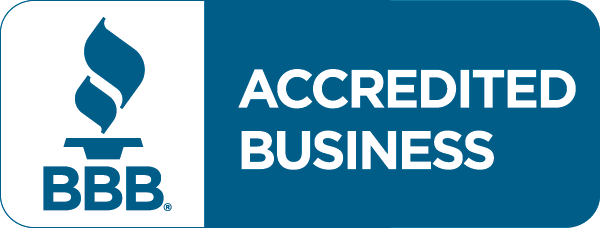SERVING
Comparisons
Money Back Guarantee
Senior and Veteran Discounts Available
Free Estimates
Request Call Back
Hero Request Form
Thank you for contacting us.
We will get back to you as soon as possible
Please try again later
Discover a Comprehensive Guide to Window Cleaning Methods
Whether you're a homeowner or business owner, understanding the various approaches in the world of window cleaning is crucial. From traditional squeegee cleaning to modern water-fed pole technology, and from pure water cleaning to full-detail cleaning. My Window Guys will help you navigate the options and ensure your windows get the care they deserve.
Explore differences between restoration and maintenance cleaning, as well as residential and commercial services, to make informed decisions for your property.
Window Cleaning with Squeegee vs. Window Cleaning with Water Fed Pole
Squeegee window cleaning is the time-tested method for the window cleaner. Throughout history, squeegee cleaning has been the traditional method and is still widely used, although now there are alternatives. Squeegee window cleaning is very versatile and can be used on inside or outside window glass.
My Window Guys use a squeegee to clean windows 100% of the time on the inside. And then maybe 20% of the time on the outside.
In both methods, we filter our water so that we have little to no streaks. This is an extra step that most traditional window cleaners do NOT use.
My Window Guys also use high-quality squeegee rubber for a higher level of performance on window cleaning.
There is not much of a downside to using squeegees in inside window cleaning; it’s the best method. In addition to window glass cleaning, squeegee cleaning can be used very effectively on mirrors, stove tops, and glass tables.
Most commercial work and commercial windows are cleaned with soap and water and squeegee in the traditional methods, although there are growing exceptions to that rule with the growing use of water-fed pole technology and purified water as a cleaning agent.
Water-fed pole window cleaning with purified water is a more recent method that is about 25 years old. This method can only be used on the exterior windows and is a more complex system for window cleaning than a traditional squeegee.
One of the advantages of a water-fed pole is that the entire window frame, window sill, and window glass can be cleaned all at the same time.
Traditional window cleaning with a squeegee means that just the glass will be cleaned, with cloths used to dry residual glass and maybe the window frame will be wiped down.
This requires a LOT of window cleaning cloths on any job.
Water-fed pole window cleaning and pure water rinse technology ‘sheets’ the organic growth and dirt and grime right off the glass.
Window glass is not ‘smooth’ when viewed under a microscope. There are pockets, ridges, and valleys in glass that are so slight that you cannot touch not feel them. But they are there.
Pure water rinsing with a good water-fed pole with a brush will not only break up these sediments and deposits, but it will also ‘rinse’ them off using the force of pure water and the power of gravity.
The same as with traditional squeegee cleaning where the glass is worked from the top down.
Pure Water window Cleaning vs. conventional water window cleaning
Pure water cleaning means that regular tap water, usually from an outside hose bib, is run over (4) different filters to remove the TDS (total dissolved solids) in the water to turn that now purified water into a fine cleaning agent.
Most window cleaning with purified water can be performed simply with this water with a TDS meter reading of less than 10 parts per million or PPM.
Conventional Water Window Cleaning, in contrast, is regular tap water that is employed with the use of cleaning chemicals added to this tap water to apply to any given cleaning situation.
The power of the chemical is much more important to the job needing to be done than the quality of the water.
Glass Only Cleaning Window Cleaning vs. Full Detail Cleaning Window Cleaning
Glass-only cleaning is when the focus of the cleaning is strictly on the glass, inside and outside, with very minimal detailing of the tracks or frames.
Full Detail Window cleaning is when the glass is cleaned inside and outside, with deep cleaning of the tracks, vacuuming, and dry brushing of tracks and frames, along with a spray down of tracks and frames to achieve a complete cleaning.
Restoration Window Cleaning vs. Maintenance Windows Cleaning
Restoration window cleaning involves employing additional methods to achieve a thorough window cleaning. These methods include razor scraping the exterior glass, particularly when there is paint or shotgun fungus resembling paint on the outside glass. A high-quality razor is an essential tool for removing hardened material from the glass, allowing purified water or soap and water to break down the remaining debris and rinse it away cleanly.
Another aspect of window restoration is the soft wash/soft brush method, which is crucial for eliminating oxidized paint, mold, mildew, algae, and bacteria. Soft washing with soft brushing may require the use of cleaning solvents like bleach or alcohol to sanitize the frames and remove organic growth, which is also rinsed away with water, leaving the window frames bright and shiny, complementing ultra-clean glass for a fresh look and mirror finish windows.
Hard water removal is the rarest of window restoration techniques and is typically an additional step after razor scraping, soft wash/soft brush, and pure water rinse. When hard water deposits are present, often due to well water falling on the window glass from an irrigation system, various products with varying cleaning power levels may be employed in an attempt to remove the hard water deposits.
Hard water removal is priced separately and should be considered on a case-by-case basis. If a window has been exposed to an irrigation system or well water, has endured direct sunlight, and hasn't been treated for an extended period, the chances of completely removing the hard water stains are typically very low. Clients with hard water on their window glass and frames need to decide whether the investment in restoring those windows is worthwhile and have the procedure done by an experienced window cleaner.
As a general rule, razor scraping and soft wash/soft brush will make up an additional 20% to 30% above the cost of a normal maintenance window cleaning.
Hard water removal is priced at $100 per hour and is timed separately because various techniques may be required to achieve results.
The benefits to homeowners or business owners investing in restoration window cleaning are as follows:
- The pace of degradation of any window condition is slowed down dramatically.
- The years of neglect are washed away leaving your windows looking great.
- The next window cleaning and maintenance cleaning of the windows will be significantly less and usually 2 or 3 to 1, meaning the maintenance cost will be one-third to one half of the restoration cleaning.
Residential Window Cleaning vs. Commercial Window Cleaning
Residential window cleaning encompasses single-family homes of any size or type. Additionally, condominiums under 5 stories and apartment buildings under 5 stories fall under the residential cleaning category.
On the other hand, commercial cleaning includes strip malls, industrial office park buildings, large condominium buildings above 5 stories, large apartment buildings above 5 stories, and hotels, as long as the building housing the windows is zoned for commercial use.
Soft Wash Window Cleaning vs. Regular Window Cleaning
Soft wash window cleaning involves using conventional water mixed with proportioned chemicals to 'soft wash' the glass, frames, sills, and window openings. Soft washing is a technique that is best employed by a trained window cleaner who understands how to use a variety of chemicals that are complementary to each other and safe for cleaning.
On the other hand, regular window cleaning is limited to water and soap. Razor scraping of the windows is also categorized under regular window cleaning because it is the most common technique used in window cleaning, and it doesn't require the use of chemicals.
Soft wash window cleaning is often used in conjunction with home soft washing. However, there is an exception when dealing with a home that has been freshly painted, but the window frames are not painted. In such cases, home washing is typically required as part of the preparation for new paint.
This doesn't necessarily mean that the windows were properly soft washed or cleaned during the painting process, and usually, a window cleaner is brought in post-painting to remove any residue, which may include mold and mildew removal.
Regular window cleaning involves windows that do not require chemical treatment beyond soap and water. The primary focus is simply to remove dirt and debris that has accumulated on the glass and frames within a year or less.
Window Cleaning Comparisons
Call us for a FREE estimate.
(941) 786-0007
SERVING
Sarasota, FL
Siesta Key, FL
Osprey, FL
Casey Key, FL
Nokomis, FL
Venice, FL
Wellen Park, FL
North Port, FL
Englewood, FL
and surrounding areas


Share On: